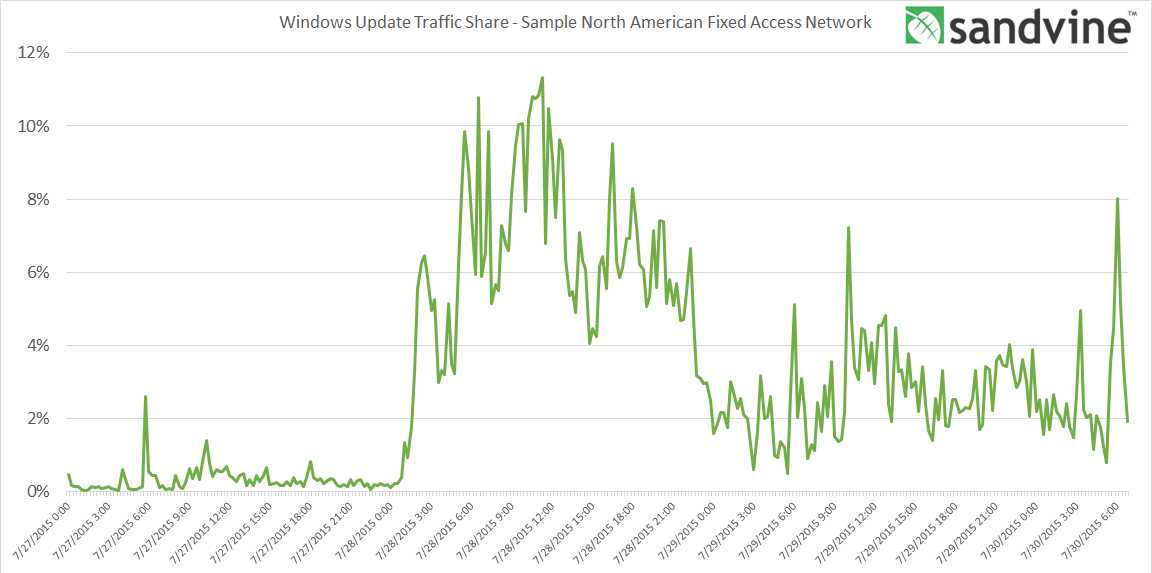Relax: Windows 10 downloads did not, in fact, break the Internet this week

There may have been a lot of people who downloaded the files needed to upgrade their older Windows 7 or 8.1 PCs to Windows 10 this week. However, it turns out that earlier fears that the amount of bandwidth needed for all those downloads could break the Internet may not have been justified.

Dan Rayburn on the Streaming Media Blog claimed that Microsoft had "reserved up to 40Tb/s per second of capacity from all of the third-party CDNs combined" for the Windows 10 upgrade launch, adding that the July 29 launch date itself would "easily be the largest day/week of traffic ever on the Internet." However, Dan Deeth, who works for ISP networking hardware company Sandvine, posted a new preliminary look at the amount of traffic generated by Windows Update in North America for the past few days, along with the share of traffic from that source.

Deeth writes:
Windows Insiders, those who were beta testing the software, were given access to the software a day early on July 28. You can see that at midnight a number of them hit refresh and downloaded the release version of the software. The traffic level then decreased in the wee hours of the day and then rose and fell throughout Tuesday. On Wednesday, July 29, launch day for the general public, you can see there is no midnight spike and in fact Windows Update traffic is half that of what was observed on the previous day."
Deeth added that the share of traffic from Windows Update was between 6-8% on Tuesday, but it only accounted for only 3-4% of traffic on Wednesday. So what happened? Deeth says:
"The lack of Internet breakage is the result of Microsoft rolling out the release in waves. Subscribers have to reserve a copy and it is rolled out to them in batches at the discretion of Microsoft…..although there may be some ways to skip the line."
Deeth also points out that Apple doesn't do this kind of controlled release when it launches a new version of iOS. In 2013, the release of iOS 7 accounted for a whopping 15% share of Internet traffic on its launch date.
Source: Internet Phenomena Blog
All the latest news, reviews, and guides for Windows and Xbox diehards.

John Callaham was a former contributor for Windows Central, covering Windows Phone, Surface, gaming, and more.
